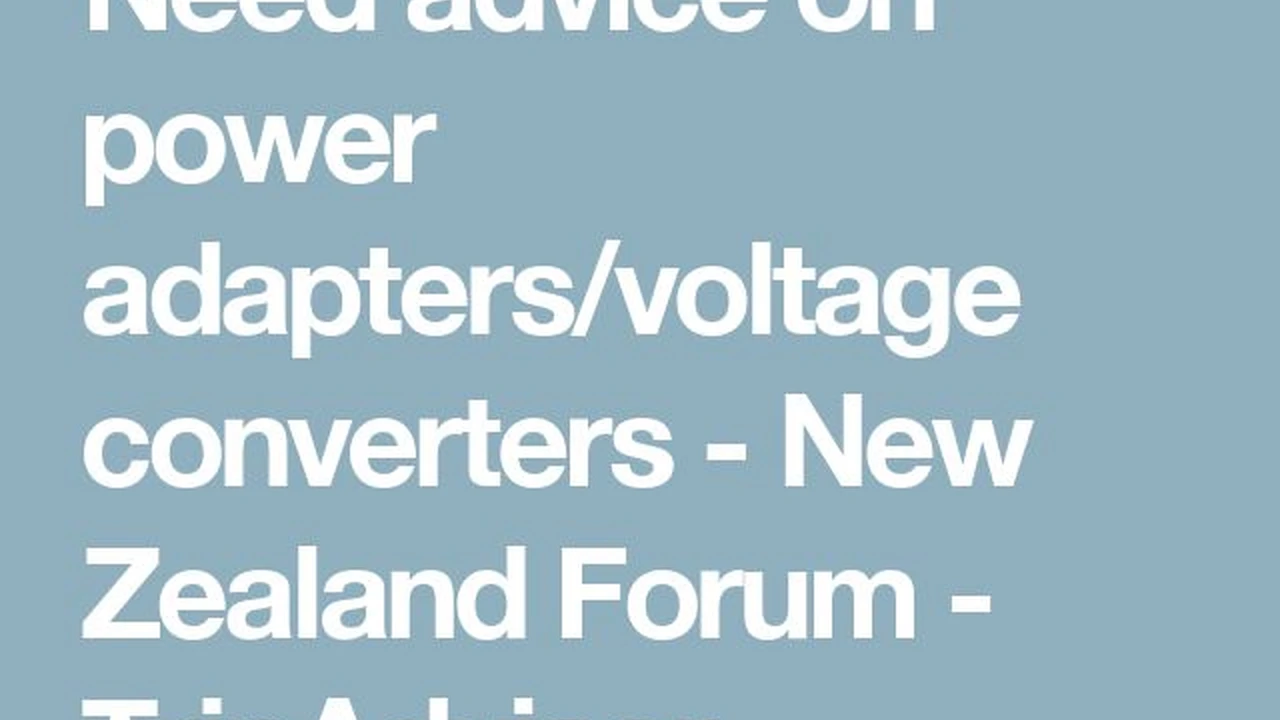Electricity in New Zealand: Adapters and Voltage
Sample meta description.

Understanding New Zealand's Electrical System Voltage and Frequency
So, you're heading to New Zealand, eh? Awesome choice! But before you can snap those Insta-worthy pics of sheep grazing against breathtaking landscapes, let's talk about something crucial: electricity. You don't want your phone dying halfway through capturing a majestic kiwi, do you? New Zealand operates on a 230V supply voltage and 50Hz. That's different from the 120V/60Hz you're used to in the US. This means your American electronics might not work properly, or even get damaged, without the right adapter and possibly a voltage converter.
New Zealand Plug Type I Adapter Guide American Travelers
New Zealand uses Type I plugs. These have two flat pins in a V-shape and sometimes include a grounding pin. Your American plugs (Type A and B) are definitely not compatible. You'll need a plug adapter to physically connect your devices to the wall outlet. Don't even think about forcing it – you'll just break something (probably the outlet, and potentially your device!).
You can find plug adapters pretty much everywhere – online retailers like Amazon, travel stores like REI, and even at some airports. They're usually inexpensive, so grab a couple! It's always good to have a spare, especially if you're traveling with multiple devices.
Voltage Converters Transformers American Appliances New Zealand
Here's where things get a little trickier. While a plug adapter lets you physically plug your device into the wall, it doesn't change the voltage. If your device is only designed for 120V, plugging it into a 230V outlet could fry it. That's where voltage converters come in.
However, many modern electronics, like smartphones, tablets, laptops, and digital cameras, are dual-voltage. This means they can handle both 120V and 230V. Check the label on your device or its power adapter. It will usually say something like "100-240V" or "100-240V ~ 50/60Hz". If you see that, you're good to go with just a plug adapter!
If your device is *not* dual-voltage (typically older appliances like hair dryers, curling irons, or electric shavers), you'll need a voltage converter. These devices step down the 230V from the New Zealand outlet to 120V, making it safe for your American electronics. Be sure to choose a converter that's rated for the wattage of your device. Using a converter that's too small can damage both the converter and your appliance.
Recommended Plug Adapters for New Zealand Travel Reviews and Pricing
Okay, let's get down to brass tacks. Here are a few plug adapters I recommend:
- BESTEK Grounded Universal Travel Adapter: This is a great all-around option. It not only converts plug types for New Zealand (Type I) but also has multiple USB ports for charging your phone and tablet simultaneously. It's relatively compact and comes with a carrying case. You can find it on Amazon for around $25-$30. Perfect for charging multiple devices at once.
- Etekcity Travel Adapter: A cheaper and smaller option, this adapter will do the job of converting your US plug to a New Zealand plug. It is smaller and more compact, making it a good option if you are trying to save space. This one can be found for around $10-$15.
- Ceptics New Zealand, Australia Travel Plug Adapter: This is a very simple adapter with no USB ports. It is the most affordable option. You can buy a set of 2 for around $8-$12. Great for travelers on a budget.
Voltage Converter Recommendations Hair Dryers Curling Irons Compatibility
If you need a voltage converter, here are a couple of options:
- FOVAL Step Down 230V to 110V Voltage Converter: This is a solid choice for smaller appliances like hair dryers and curling irons. It's rated for 200W, so make sure your appliance doesn't exceed that. It's available on Amazon for around $30-$40.
- Rockstone Power Voltage Converter 2000 Watt Step Up/Down Transformer: This is a heavy-duty converter that can handle larger appliances. It's more expensive (around $80-$100), but it's worth it if you're bringing multiple high-wattage devices.
Using USB Charging Ports Safely Power Banks New Zealand
Many plug adapters come with USB charging ports. These are super convenient for charging your phone, tablet, or other USB-powered devices. However, make sure the adapter is from a reputable brand and has safety certifications. Cheap, unbranded adapters can be unreliable and even dangerous.
Another option is to bring a portable power bank. This is a great way to charge your devices on the go, especially if you're planning on doing a lot of hiking or exploring in remote areas. Plus, you can charge the power bank overnight using a plug adapter and then use it to charge your devices during the day.
Power Cord Safety Tips New Zealand Travel
A few extra tips to keep in mind:
- Unplug your devices when you're not using them. This saves energy and reduces the risk of overheating.
- Don't overload outlets. Plugging too many devices into one outlet can be a fire hazard.
- Inspect your power cords for damage. If you see any frayed wires or cracks, don't use the cord.
- Keep your devices away from water. Electricity and water don't mix!
Specific Product Comparison Travel Adapters Voltage Converters
Let's dive a bit deeper into comparing some of the recommended products. For travel adapters, the BESTEK stands out due to its multiple USB ports and universal compatibility. It's a great option if you have several devices to charge. However, if you're on a tight budget and only need a basic adapter, the Ceptics adapter is a solid choice.
When it comes to voltage converters, the FOVAL is suitable for low-wattage appliances, while the Rockstone Power is designed for higher-wattage devices. Consider the wattage of your appliances and choose a converter that can handle the load. Remember, it's always better to err on the side of caution and choose a converter that's slightly overpowered than one that's undersized.
And remember, prices fluctuate. Be sure to check the latest prices on Amazon or other retailers before making a purchase.
Power Outages in New Zealand Preparedness Advice
While New Zealand's electrical grid is generally reliable, power outages can happen, especially during storms or other extreme weather events. It's always a good idea to be prepared. Consider packing a small flashlight or headlamp, and make sure your phone is fully charged before heading out for the day. Knowing where the nearest convenience store is located can also be helpful, in case you need to buy batteries or other supplies.
Final Thoughts Staying Charged in New Zealand
Navigating the electrical system in a new country can be a bit confusing, but with a little preparation, you can easily keep your devices charged and ready to go. Just remember to check the voltage requirements of your devices, choose the right adapter and/or converter, and follow a few simple safety tips. Now go enjoy your trip to New Zealand!
:max_bytes(150000):strip_icc()/277019-baked-pork-chops-with-cream-of-mushroom-soup-DDMFS-beauty-4x3-BG-7505-5762b731cf30447d9cbbbbbf387beafa.jpg)






